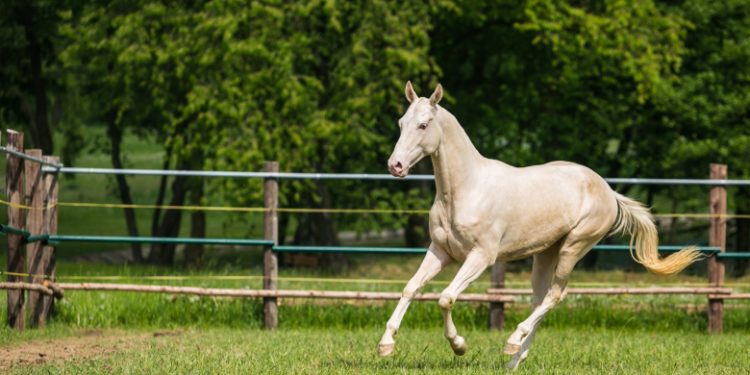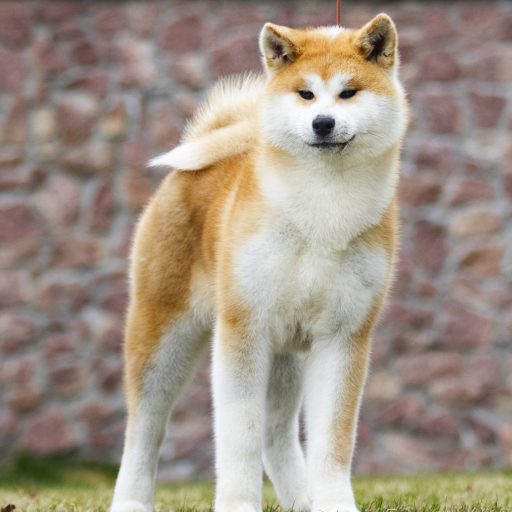A horse with an atypical morphology, the Akhal-Teke is a fine and athletic animal that is best known for its sumptuous coat. Originally from Turkmenistan, the Akhal-Teke is now present in several countries of the world such as the United States and France. Versatile, this courageous and determined horse shows excellent sporting abilities in endurance, but also in Olympic disciplines. Discover the Akhal-Teke with Woopets!
Breed History
The Akhal-Teke takes its name from the Téké tribe who have been raising it for more than 30,000 years, and from the Akhal oasis where the best breeders were located.
Originally from Turkmenistan, the Akhal-Teke has a rich history dating back to the 4th and 3rd centuries BC. Remains of the ancestors of the Akhal-Teke have also been found in the tombs of ancient peoples. nomads, the Scythians, who were then reputed to have the best horses of the time.
Exported throughout Asia during antiquity, the Akhal-Teke brought its blood to the Arabian Thoroughbred and contributed to the creation of other well-known breeds such as the English Thoroughbred and the Trakehner.
Highly developed by the USSR, the breed was then subject to massive slaughter for the benefit of the development of Soviet agriculture. The herd thus fell from around 20,000 horses at the end of the 19th century to only 300 in the middle of the 20th century. Thanks to a few lovers of the breed, the Akhal-Teke is saved.
Physical peculiarities
His head: the head carriage of the Akhal-Teke is haughty. The head is light, fine and dry. The muzzle is straight or slightly convex and the cheeks are wide. Thin and long, the ears are set high. The eyes are large, almond-shaped, and very expressive.
Its neckline: grafted high on the shoulder, the neckline is long and thin, either S-shaped or rounded.
His body: the body of the Akhal-Teke is slender. The back is often long with a pronounced, well-protruding withers. The shoulder is long and oblique, often set on a narrow chest. The loin is wide, as is the croup. The musculature is flat and dense.
Its limbs: the limbs are long and lean. The tendons are strong and the joints are strong. The hooves are small and hard.
Its dress: the skin is fine and the dress is silky. Bay, isabelle, chestnut, black, grey, palomino or cream: the color of the dress is varied. It can have a metallic, gold or silver hue.
His hair: the Akhal-Teke has very fine and sparse hair. The mane is not very developed and the tail is set low on the croup. Very often, it has neither forelock nor baleen.
His gaits: the gaits are fast and light. The Akhal-Teke moves like a feline: its movements are powerful, elastic and elegant at the same time.
Use
Still selected for flat racing in Russia, the Akhal-Teke is a versatile horse that can be ridden in all equestrian disciplines. However, thanks to its endurance and robustness, the Akhal-Teke is particularly good at endurance and eventing. Handy and powerful, it excels in all Olympic disciplines, but also in equestrian show where it appeals for its elegance and grace.
Little known to the general public due to the rarity of its breed, the Akhal-Teke is a formidable sport horse that deserves to be better known.
Breeding
The Stud-Book of the Akhal-Teke breed was created in 1930 in Russia.
Little crossed with other horses because of the isolation of its place of life, the Akhal-Teke is a particularly pure horse breed. His breeding revolves around 18 lines currently, their name taking up that of the best stallions of the breed.
Long bred only in Turkmenistan, Kazakhstan and Russia, it is now present in the West. However, the breed has only 600 Akhal-Teke horses in Europe, compared to around 3,000 worldwide. National stud farms sometimes use his blood to improve certain breeds of racehorses.












